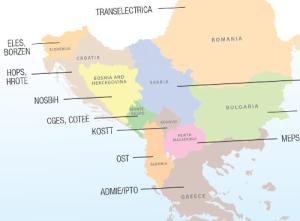The Challenging Path
Elliot Roseman is program director for the Electricity Market Initiative for the U.S. Energy Association.
The massive transition taking place in the power sector of southeast Europe is both unique to the region, and full of lessons for the rest of the world.

It's no secret that Europe intends to rapidly decarbonize the power sector. Many countries and utilities across southeast Europe — whether in the European Union or not — are developing national climate plans and actions to sharply reduce emissions, chiefly using two pillars: retiring existing lignite and coal generation plants and adding substantial renewables.
At the same time, they plan to consolidate (couple) and organize their markets to trade power seamlessly across borders, achieving benefits in both generation and transmission, and providing liquidity and clear price signals to potential investors.
Given this tsunami of changes, it's vital to anticipate and prepare for the opportunities and speedbumps in advance.
To enable stakeholders to do so, the United States Energy Association, in cooperation with the members of our Electricity Market Initiative and the United States Agency for International Development, recently completed an in-depth analysis of the market and network impacts of these changes, regionally and for eleven individual countries, by 2030.

